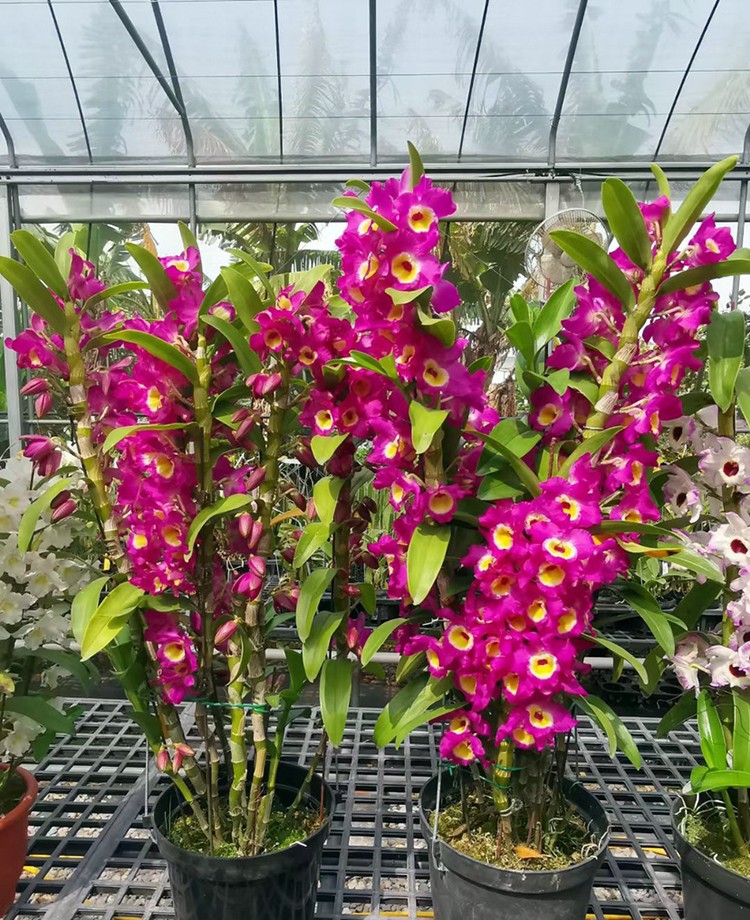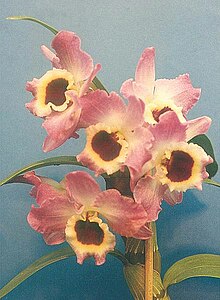
Dendrobium nobile occurs in lowland and mountain forests, often on mossy limestone rocks. It is a tender plant that only survives winters in USDA hardiness zones 11 and above.[11] It has strap-shaped, persistent leaves, and blooms mostly in winter and spring. It produces short, 2 to 4 flowered racemes, fragrant, waxy, and highly variable in color, arising from the upper nodes of leafed and leafless canes.
Examples of the species are grown in Kew Gardens Tropical Nursery in London and seeds are stored in the Millennium Seed Bank there.[citation needed]
 A nobile-type hybrid or cultivar
A nobile-type hybrid or cultivar
Dendrobium nobile is a sympodial orchid which forms pseudobulbs. When the life cycle of the mother plant ends it produces offsets, continuing the life of the plant. The new plant then goes through the same cycle. The inflorescence is erect; during the flowering period blooms form along the length of the flowering stem. This seedling is monocot that is it forms only a single initial leaf, and the plant has thin white roots which attach themselves to another plant or object, making it an epiphytic plant.[citation needed]
Extract of the stems of Dendrobium nobile yielded 17 phenanthrenes (including 3,4,8-trimethoxyphenanthrene-2,5-diol, 2,8-dihydroxy-3,4,7-trimethoxyphenanthrene, 3-hydroxy-2,4,7-trimethoxy-9,10-dihydrophenanthrene, 2,8-dihydroxy-3,4,7-trimethoxy-9,10-dihydrophenanthrene, 2-hydroxy-4,7-dimethoxy-9,10-dihydrophenanthrene, 2,2'-dihydroxy-3,3',4,4',7,7'-hexamethoxy-9,9',10,10'-tetrahydro-1,1'-biphenanthrene and 2,3,5-trihydroxy-4,9-dimethoxyphenanthrene).[12][13] There have been many studies on the complex chemistry of the plant.[vague]





